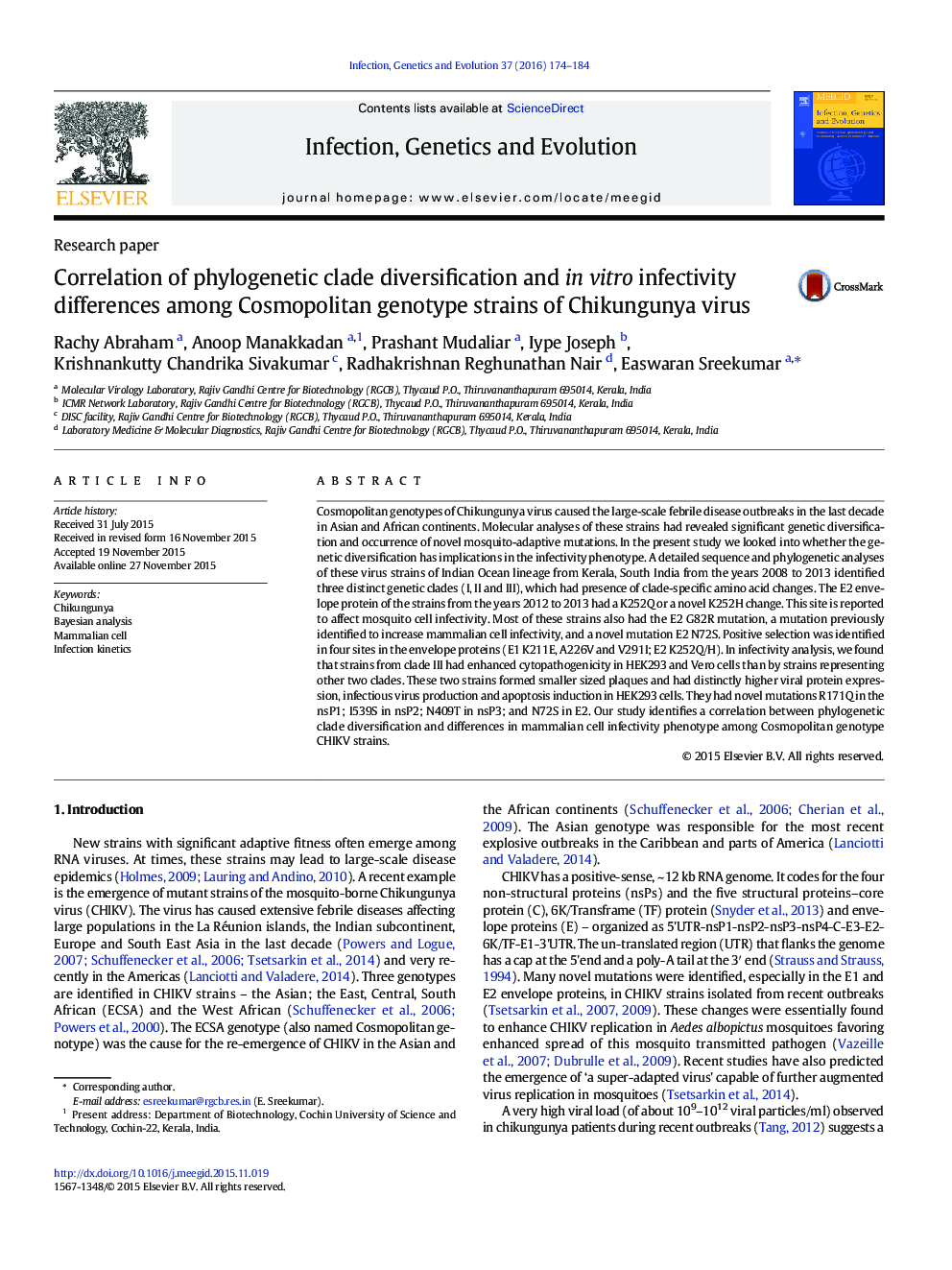| Article ID | Journal | Published Year | Pages | File Type |
|---|---|---|---|---|
| 5909102 | Infection, Genetics and Evolution | 2016 | 11 Pages |
â¢Identified genetic clade diversification of Cosmopolitan genotype Chikungunya virus strainsâ¢Detected correlation between genetic clade diversification and enhanced mammalian cell infectivityâ¢Identified novel mutations in viral strains with higher infectivityâ¢Detected a novel E2 K252H mutation in recent (2012-13) strains
Cosmopolitan genotypes of Chikungunya virus caused the large-scale febrile disease outbreaks in the last decade in Asian and African continents. Molecular analyses of these strains had revealed significant genetic diversification and occurrence of novel mosquito-adaptive mutations. In the present study we looked into whether the genetic diversification has implications in the infectivity phenotype. A detailed sequence and phylogenetic analyses of these virus strains of Indian Ocean lineage from Kerala, South India from the years 2008 to 2013 identified three distinct genetic clades (I, II and III), which had presence of clade-specific amino acid changes. The E2 envelope protein of the strains from the years 2012 to 2013 had a K252Q or a novel K252H change. This site is reported to affect mosquito cell infectivity. Most of these strains also had the E2 G82R mutation, a mutation previously identified to increase mammalian cell infectivity, and a novel mutation E2 N72S. Positive selection was identified in four sites in the envelope proteins (E1 K211E, A226V and V291I; E2 K252Q/H). In infectivity analysis, we found that strains from clade III had enhanced cytopathogenicity in HEK293 and Vero cells than by strains representing other two clades. These two strains formed smaller sized plaques and had distinctly higher viral protein expression, infectious virus production and apoptosis induction in HEK293 cells. They had novel mutations R171Q in the nsP1; I539S in nsP2; N409T in nsP3; and N72S in E2. Our study identifies a correlation between phylogenetic clade diversification and differences in mammalian cell infectivity phenotype among Cosmopolitan genotype CHIKV strains.
